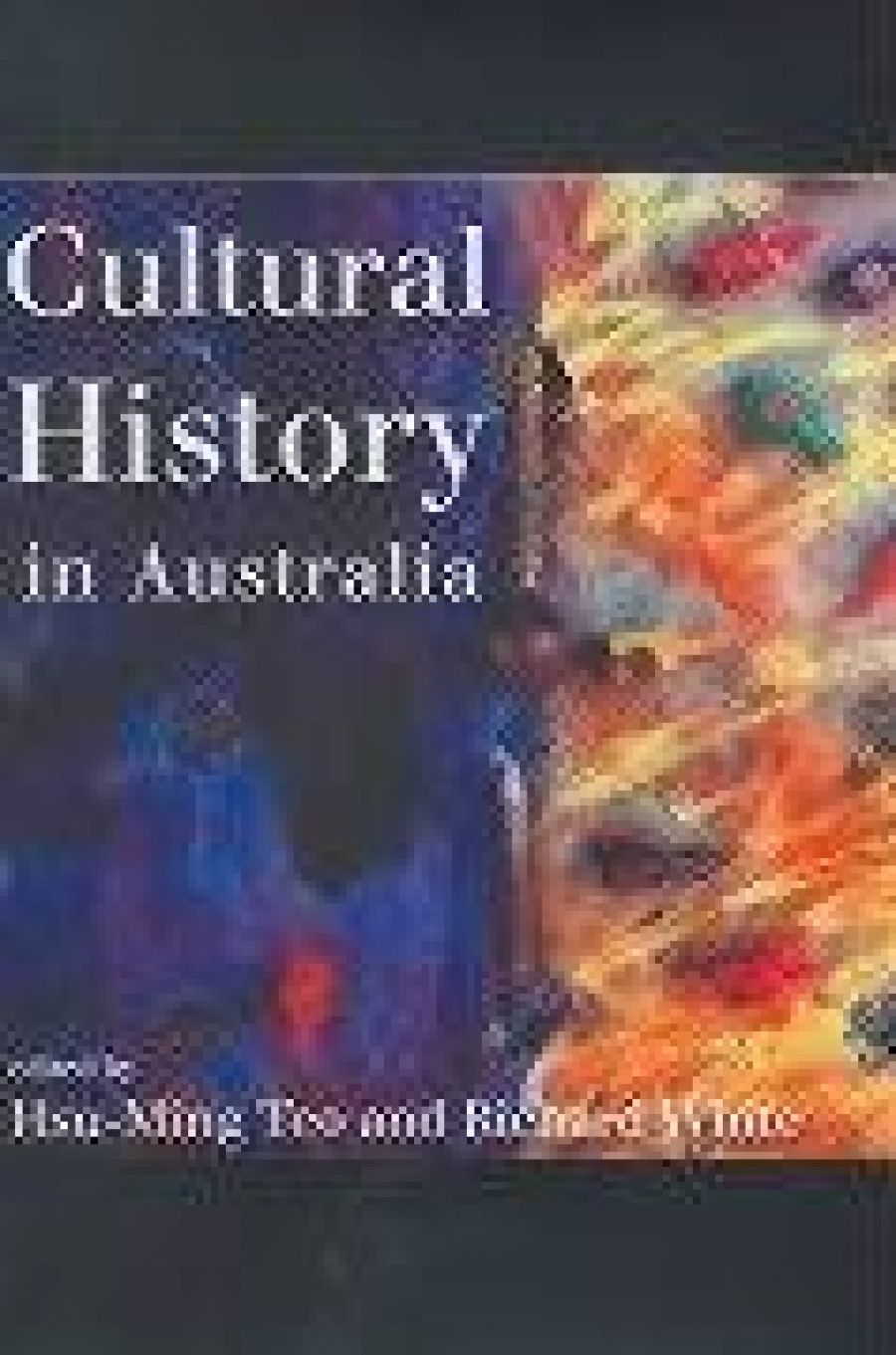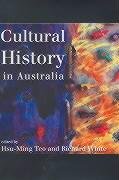
- Free Article: No
- Contents Category: History
- Review Article: Yes
- Article Title: We're All Culturalists Now
- Online Only: No
- Custom Highlight Text:
The editors of this book declare that cultural history is fashionable, so fashionable that it stands in for what might otherwise be known as ‘general history’ or even just ‘history’. ‘When historians set out to write the history of everything,’ they claim, ‘these days they are most likely to imagine themselves writing cultural history.’
Why, then, is it necessary to assemble a collection of essays on the subject? It cannot be simply to celebrate the triumph of this form of history, since many of the contributors are still urging its attractions. The purpose might be to demonstrate the range and accomplishment of cultural history in Australia, since the collection includes some distinguished local practitioners – except that their contributions to the genre are well established and readily available. Alternatively, such collections can provide the opportunity to consider the theory and method of cultural history, and quite a few of the contributors do so – but mostly with reference to their own practice.
- Book 1 Title: Cultural History in Australia
- Book 1 Biblio: UNSW Press, $39.95 pb, 284 pp
- Book 1 Cover Small (400 x 600):

- Book 1 Cover (800 x 1200):

Making the best of such diversity, the blurb tells us that the book unites historiography, theory, international trends and new case studies. Some of the contributors, it says, consider cultural history as an ‘approach to history’ and some ‘as a source of subjects for historical examination’. The copywriter lapses into hyperbole with the claim that the book asks the ‘hard questions’, including ‘does cultural history make good history?’
For that question to be put, it is necessary to establish what cultural history is. If cultural history is defined by its field of practice, then the argument will have to do with the meaning attached to culture. The essays in this collection find culture in literature, gardens, landscape, tourism, social distinctions, racial and ethnic identities, memories, psychology and much else. Cultural studies proceed from the post-essentialist conviction that these and other subjects offer richer insights than those found in state institutions or the structures of economic and social life.
But if cultural history is taken as a method, then the argument rests on its explanatory power. Culture is a rich and expressive term for human creativity, and signifies something that is made rather than given, expressive rather than definitive. The cultural turn is a move away from the positivism of the social sciences towards fluidity, contingency and diversity; but it is also a talisman of authenticity. Culture has come to command an extraordinary prestige in the most unlikely places: you will hear the least reflective of executives acknowledging the impotence of market incentives and talking of the need to change the culture of his organisation, as if that culture were some piece of plasticine to be rolled into a ball and reshaped to fit the mould of business.
Cultural history, as a method, reshapes older forms of history. Ann Curthoys takes national history as a comparatively recent phenomenon in Australia, and calls for a new transnational history that can embrace the networks of power and influence that transcend the nation. Marilyn Lake returns to that stock figure of the settler society, the white man, to suggest the fears and aspirations that created him. Alan Atkinson considers what would once have been called the history of communications – post and telegraph, railways, newspapers, electronic media – as constituting community. Tom Griffith gives us the complementary relationship of nature and culture as a new way of understanding environmental history.
These and other essays make up the first part of the collection, which bears the title ‘In general’. They are followed by a second part, ‘In particular’, in which Penny Russell returns to her earlier work on female gentility in colonial Australia, and suggests its larger meaning. Katie Holmes reads the gender, class and colonial understandings of two women gardeners, one near Hobart and one in south-west Queensland. Angela Woollacott considers the travel writings of Mary Gaunt as a form of imperial adventuring. Alistair Thomson gives us an instalment of his study of postwar British migration to Australia, and Joy Damousi a section of her larger study of the influence of popular psychology in the 1950s.
In what sense are these fine case studies exercises in cultural history? In their subject matter, they could be reshuffled into collections on social, oral and women’s history without losing any of their effect. In their search for new levels of meaning, their concern for cultural identity and their reconfiguration of race, nation, space, gender and subjectivity, they are practising cultural history.
An Australian historian who applies for funding from the Australian Research Council is required to nominate the field or fields in which her or his work falls. The ARC’s taxonomy of Research Fields Courses and Disciplines offers a limited choice: ‘Historical Studies’, ‘Literature Studies’ and ‘Cultural Studies’. The Australian Bureau of Statistics gives a long list of Socio-Economic Objectives, but ‘Understanding Australia’s Past’, ‘Languages and literature’ and ‘Communication across languages and cultures’ still seem the most likely possibilities. If, as the editors claim, historians who set out to write history today are most likely to imagine themselves writing cultural history, then perhaps their missionary zeal is justified.
The evangelical sections of the book are the most varied. Greg Dening’s essay stands out for its personal qualities. He sets little store on proselytising cultural history, as he is concerned to declare his own singular historical practice. He began his first postdoctoral appointment in Hawaii, he recalls, with the intention of teaching ‘ethnohistory’. That was too ethnocentric, and he toys with ‘anthrohistory’, ‘double-visioned history’, even ‘cross-cultural history’, until settling on cultural history with the explanation ‘Why not?’
Stephen Garton contributes a tightly argued defence of cultural history from those who see it as a lethal virus in the discipline and the profession. This is a cogent refutation of the jeremiads of Richard Evans and Keith Windschuttle, as well as a generous survey of recent work done in Australia under the cultural sign. Garton comes closest to validating the undertaking on the back cover of this book with his argument that cultural historians have indeed made good history, though I’m not sure he will persuade the sceptics.
The editors are more concerned to chart the genealogy of cultural history and signpost its directions. Richard White and Hsu-Ming Teo provide a helpful introductory account of how the ‘social’ history mutated quietly into ‘cultural’ history and the consequences of that transformation. The emphasis here is on the ‘easy victory’ of cultural history in Australia and its consequently incomplete character. ‘Just as Australia produced socialism without doctrine in the late nineteenth century,’ they write, ‘it produced cultural history without overt theorising in the late twentieth century.’ Accordingly, they tax the Australian practitioners on their failure to follow the overseas theorists more fully.
I’m enough of a political historian to know that Australia did not produce socialism in the late nineteenth century, enough of a labour one to appreciate that Australia did not lack socialist doctrine. I’m enough of a national historian to resist the deference of a transnational project to international authorities. Rather, I recall an English statesman and hear the words ‘we are all culturalists now’. If so, then perhaps it is time to declare a moratorium on the consciousness-raising and get on with the history.


Comments powered by CComment